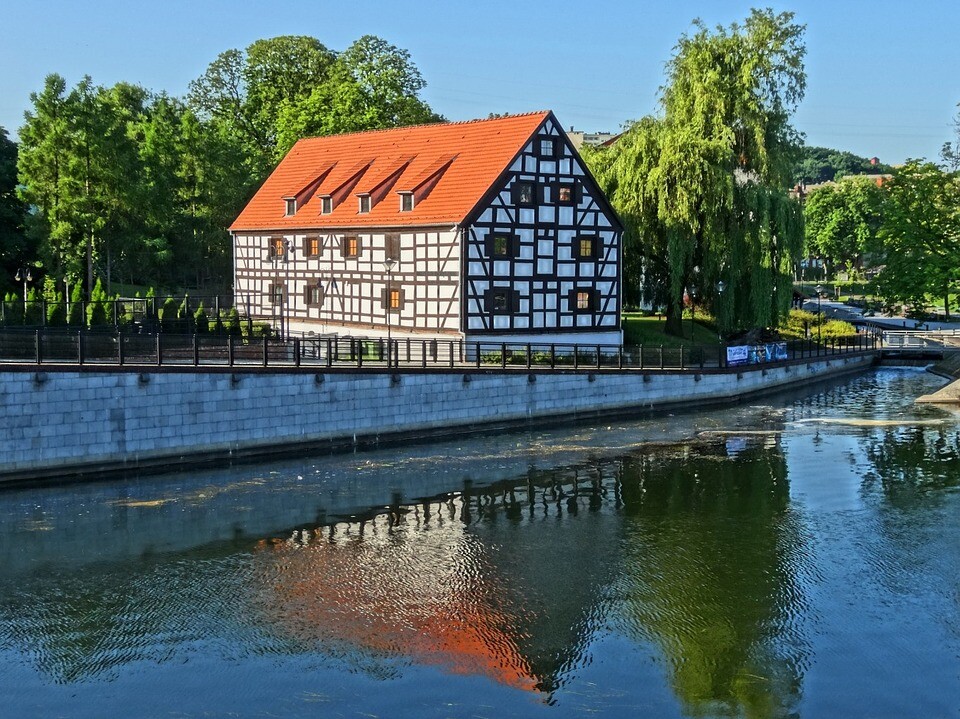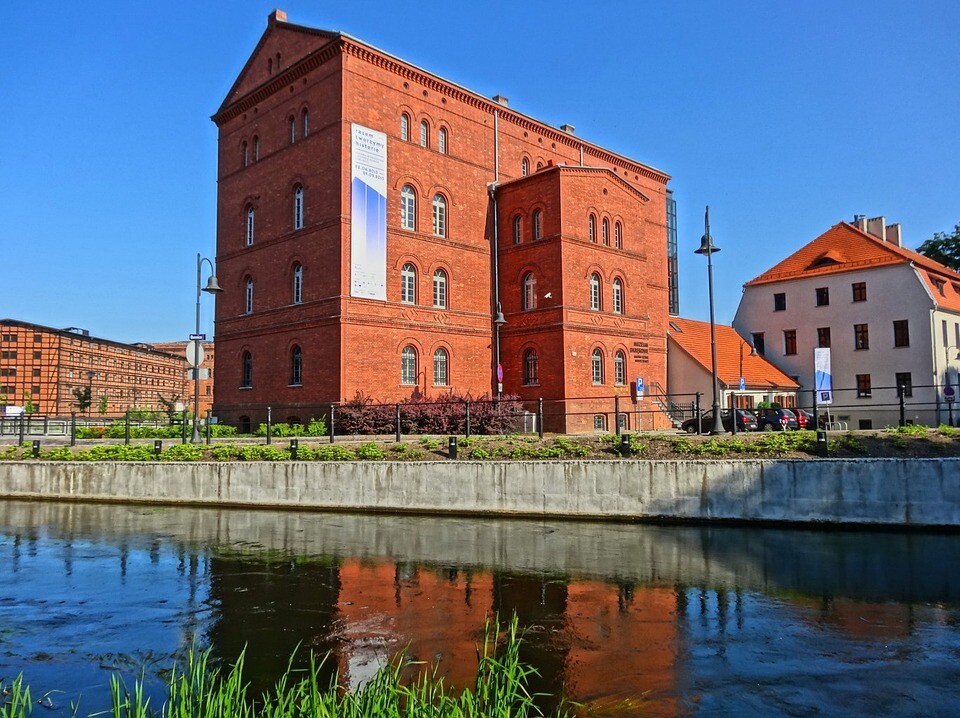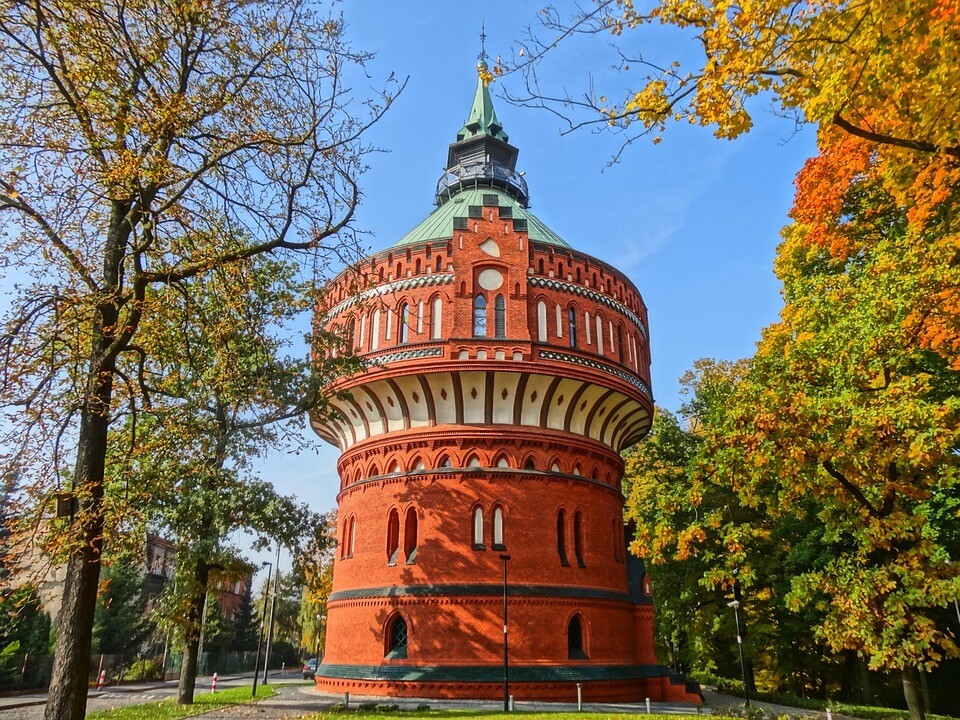The best things to do in Bydgoszcz - Museums
- Things to prepare before going to Bydgoszcz
- Costs of living in Bydgoszcz
- Save money in Bydgoszcz - Tips for living in Bydgoszcz on a student budget
- How to get to Bydgoszcz - Getting to Bydgoszcz by train, plane, car or bus
- Bydgoszcz neighborhoods - The most important districts of Bydgoszcz
- Accommodation for students in Bydgoszcz - Top tips and pieces of advice
- Public transport in Bydgoszcz - Getting around Bydgoszcz
- Nightlife in Bydgoszcz - Night club guide and going out in Bydgoszcz
- Where to eat in Bydgoszcz - Polish cuisine and gastronomy in Bydgoszcz
- Polish cuisine - The gastronomy of Poland and traditional dishes
- The best things to do in Bydgoszcz
- The best things to do in Bydgoszcz - Museums
- The best things to do in Bydgoszcz - Churches
- Where to relax in Bydgoszcz
- Cinemas and Theatres in Bydgoszcz
- Day trips from Bydgoszcz - Places to visit and excursions around Bydgoszcz
- Festivals in Bydgoszcz - Festivities and celebrations calendar
- Bydgoszcz In 2 Days - What to see in Bydgoszcz in 2 days
Museums at the Mill Island and Granaries

The Leon Wyczółkowski Regional Museum in Bydgoszcz includes a few buildings, mostly on the Mill Island:
- Granaries – Grodzka 7-11 Street: You can see there some permanent exhibitions such as Bydgoszcz Memorabilia, Bydgoszcz – Impressions of the City, which shows the history of the city. You can also see what the streets of Bydgoszcz looked like in the twenties and thirties. There are also temporary exhibitions organised.
- Archaeological Collections – Mennica 2 Street on the Mill Island
- European Money Centre – Mennica 4 Street on the Mill Island: shows the history of the old Bydgoszcz mint, which was located on the Mill Island in 16th and 17th century. There was a time, when the Bydgoszcz Mint was the only mint on the Crown of the Kingdom of Poland land. In Bydgoszcz the most expensive Polish coin was manufactured (sold on auction in New York in 2008 for 1 380 000 dollars).
- Leon Wyczółkowski House – Mennica 7 Street on the Mill Island: a building constructed in the beginning of 20th century as a house for the management of the Rother’s Mills, which now displays the works (paintings and engravings) of Polish painter, Leon Wyczółkowski. You can also see the painter’s studio equipment/li>
- Modern Art Gallery, Red Granary – Mennica 8 Street on the Mill Island: The Red Granary - a permanent exhibition showing the development of Polish modern art in the 20th century. It presents the most important trends and tendencies in Polish art, as well as the works of the most well-known artistic groups. This museum also presents the contribution of artists connected with Bydgoszcz in terms of national artistic life.
- Exploseum
Opening hours for the Granaries and museums on the Mill Island:
- Summer season (April – October)
- Tuesday, Wednesday, Friday 10 am - 6 pm
- Thursday 10 am - 7 pm
- Saturday, Sunday 11 am - 6 pm
- Monday – closed
- Winter season (November - March)
- Tuesday, Wednesday, Friday 9 am - 4 pm
- Thursday 9 am - 6 pm
- Saturday, Sunday 10 am - 4 pm
- Monday – closed
- Ticket prices:
- Normal ticket – 5 PLN
- Reduced ticket – 3 PLN
- Saturday – admission free

Exploseum- War Technology Center of DAG Fabrik Bromberg
This is a very special museum illustrating industrial heritage and the complicated history of the city of Bydgoszcz. As can be read on the museum’s website: “It is an ethnographic museum of industrial architecture and tourist trail on the premises of NGL-Betrieb, a nitroglycerin production zone”. Deep in the forest in the south-eastern part of the city, far away from the city centre, Germans during the Second World War built a big, hidden dynamite and explosives factory. Hundreds of people from occupied Poland and other countries conquered by Nazi Germany were working there as a slave labour force. It was one of the biggest and the farthest east factories of that kind in the Third Reich. Now it’s renovated and open to public. The exhibition talks about the history of dynamite, the DAG consortium, established by world famous Alfred Nobel, about different types of weapons and - of course - shows the history of DAG Fabrik Bromberg. The underground corridors (now an underground tourist route) are 2 km long and connect different bunkers. Definitely worth a visit! The museum was chosen to be one of the best 10 tourist attractions of 2016 in Poland!
How to get there
It’s located around 5 km from the city centre, in the middle of the forest, in the industrial part of the city. The easiest way would be by car (you have to take Glinki street to enter Bydgoszcz Industrial and Technological Park, and then Bydgoskich Przemysłowców and Petersona street; there are signs on the streets leading to the museum). There’s also a direct bus connection, lines 68E and 68P go there from Osiedle Leśne and the UKW campus.
Opening hours:
- Summer season (April-September)
- Monday - closed
- Tuesday, Wednesday, Friday, Saturday, Sunday – 9:00 am – 5:00 pm
- Thursday – 9:00 am – 7:00 pm
- Winter season (October - March)
- Monday - closed
- other weekdays 9:00 am – 5:00 pm
Museum of Soap and History of Dirt
The one and only museum about dirt and soap! A very interesting, small museum on Długa Street in the Old Town. You get the unique chance to make your own soap! You can visit the museum every day from 10 am to 6 pm. Guided visits starts at: 11.30 am, 1.00 pm, 2.30 pm and 4 pm.
Important! If you wish to have a guided tour in a foreign language you should contact the museum staff beforehand, in order to make a reservation and to ensure that there will be someone to show you around in a language you understand. English is available every day, and German, French, Italian and Russian guides are also available - but only for groups, and if you let them know in advance.
To make an reservation contact the museum by e-mail: [email protected] or call 0048 52 515 70 15.
Water Tower (Wieża Ciśnień)

The Water Tower is an interesting place to visit, mostly for the best view of Bydgoszcz you can get. It’s located south from the Old Town on the top of Dąbrowskiego Hill, in the middle of a park. It was built in neo-Gothic style in 1900 as a part of a water supply system. The tower is 45 m high, and together with the hill it is 75 m above the Old Town. Now it’s an art gallery and also part of the Waterworks Museum, the first of its kind in Poland. You have to climb a lot of stairs to get to the panoramic terrace, which can give you a 360° view of the city of Bydgoszcz.
- Address: Filarecka 1 Street, Bydgoszcz
- Normal ticket: 5 PLN
- Reduced ticket - 2 PLN (students)
With this ticket you are entitled (within 24 hours) to enter the second part of the Waterworks Museum at no extra cost. It’s the Pumping Hall located in Gdański Forest, near Myślęcinek Park. If you ever wondered how does water gets to the taps in your kitchen and bathroom, this is the place where you can find the answer.
- Address: Gdańska 242 Street, Bydgoszcz
- Opening hours for both parts of the museum:
- Monday - Thursday 11.00 am - 16.00 pm
- Friday - closed
- Saturday and Sunday 13.00 - 17.00 pm
- Important: The last entry is always 1 hour before the closing!
TeH2O: Bydgoszcz Water, Industry and Craft Trail
The newest tourist trail, which connects all of the most important cultural and historic places, which are connected with water, technology and industrial history of the city. The route includes museums that are described in detail in this guide, such us Exploseum, Granaries or the Water Tower, but they also have other places on the list as well. Some of them are a little bit further from the centre, but they still are worth a visit! The list includes 15 locations, such as the Museum of Photography, The Pharmacy Museum or Lemara barge in front of the Granaries. For the map and much more information go to the website (English).
Important: the Night of Museums takes place in May or June, during which you can go round all of Bydgoszcz museums for free. During the night, every museum organizes other, additional events and attractions; you can join numerous competitions, enter places that usually are closed for the public (for example one year you could enter the dome of the Basilica church), get some guided tours for free etc. On Mill Island usually you can taste some traditional food from the region. Make sure you don’t miss out!
Photo gallery
Content available in other languages
Want to have your own Erasmus blog?
If you are experiencing living abroad, you're an avid traveller or want to promote the city where you live... create your own blog and share your adventures!
I want to create my Erasmus blog! →


















Comments (0 comments)